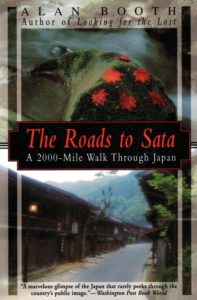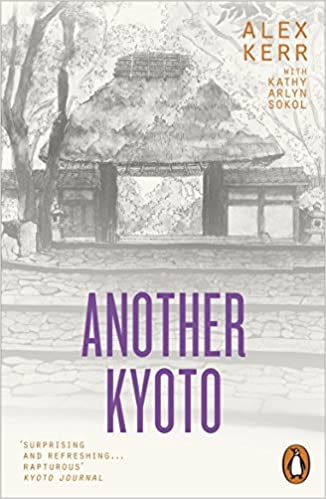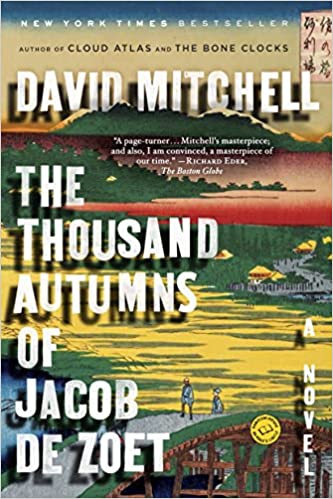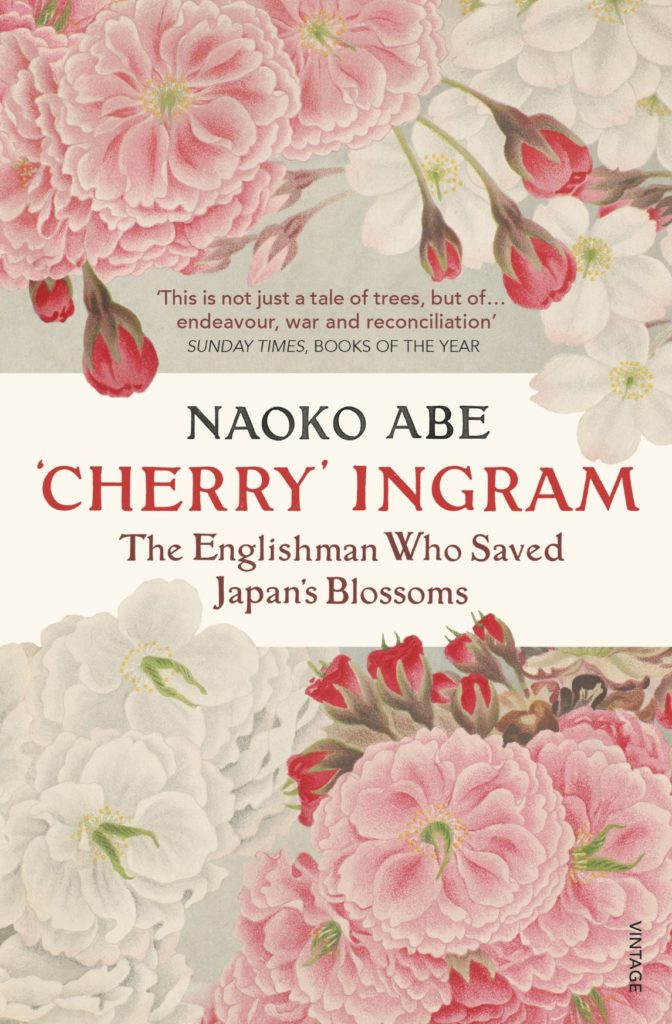As a keen traveller, you may enjoy reading up on a particular place before visiting there to get a feel for the country. It not only helps you gain the knowledge of the country and make the trip more meaningful, but also let the anticipation grow making the pre-trip preparation more enjoyable. Here are some of our recommended books on Japan which give a good background of the country. The reviews are sourced from goodreads.com.
The Roads to Sata
Our first of the recommended books on Japan, The Roads to Sata by Alan Booth, is a highly enjoyable read. It provides unique and charming insights into Japan, its culture and people.
Traveling only along small back roads, Alan Booth traversed Japan’s entire length on foot. It was from Soya at the country’s northernmost tip, to Cape Sata in the extreme south, across three islands and some 2,000 miles of rural Japan. The Roads to Sata is his wry, witty, inimitable account of that prodigious trek.
Although he was a city person–he grew up in London and spent most of his adult life in Tokyo–Booth had an extraordinary ability to capture the feel of rural Japan in his writing. Throughout his long and arduous trek, he encountered a variety of people who inhabit the Japanese countryside–from fishermen and soldiers, to bar hostesses and school teachers, to hermits, drunks, and tramps. His wonderful and often hilarious descriptions of these encounters are the highlights of these pages. It paints a multifaceted picture of Japan from the perspective of an outsider, but with the knowledge of an insider.
The Roads to Sata is travel writing at its best, illuminating and disarming, poignant yet hilarious, critical but respectful. Travelling across Japan with Alan Booth, readers will enjoy the wit and insight of a uniquely perceptive guide, and more importantly, they will discover a new face of an often-misunderstood nation.

Another Kyoto
Our next two recommended books on Japan are works of author Alex Kerr. Kerr has lived in Japan for close to 50 years and has a real affinity for the country. Kerr’s 2002 book Dogs and Demons focuses on problems Japan still faces since the collapse of the bubble economy in the late 1980s, whilst Another Kyoto (2016) is a deep study into the culture of this historic city.
Another Kyoto is the fruit of Alex Kerr’s half-century of living in Japan and of lore gleaned from people he’s met along the way: artists, Zen monks and Shinto priests, Japanese literati, and expat personalities from days past, such as legendary art dealer David Kidd.
Kerr turns what we thought we knew about Kyoto inside-out, revealing the inner ideas behind simple things like walls, floors, and sliding doors. After this book, one can never walk through a Zen gate in the same way again.

Dogs and Demons
In this book, Kerr chronicles various facets of Japan’s recent economic malaise, from the failure of its banks and pension funds to the decline of its once magnificent modern cinema. He laments practices which have seen development prioritized over Japan’s environment: its seashores lined with concrete, roads leading to nowhere in the mountains, its ‘monument frenzy’. Despite the criticism, Kerr writes with humor, passion and certainly from the perspective of one who deeply admires Japan and its traditions.

The Thousand Autumns of Jacob de Zoet
For something different, a very entertaining novel set in historical Japan is The Thousand Autumns of Jacob de Zoet by David Mitchell, short-listed for the Booker Prize.
The year is 1799, the place Dejima in Nagasaki Harbor, the “high-walled, fan-shaped artificial island” that is the Japanese Empire’s single port and sole window onto the world. It was designed to keep the West at bay; the farthest outpost of the war-ravaged Dutch East Indies Company. And it was a de facto prison for the dozen foreigners permitted to live and work there. To this place of devious merchants, deceitful interpreters, costly courtesans, earthquakes, and typhoons comes Jacob de Zoet, a devout and resourceful young clerk who has five years in the East to earn a fortune of sufficient size to win the hand of his wealthy fiancée back in Holland.
But Jacob’s original intentions are eclipsed after a chance encounter with Orito Aibagawa, the disfigured daughter of a samurai doctor and midwife to the city’s powerful magistrate. The borders between propriety, profit and pleasure blur until Jacob finds his vision clouded, one rash promise made and then fatefully broken. The consequences will extend beyond Jacob’s worst imaginings. As one cynical colleague asks, “Who ain’t a gambler in the glorious Orient, with his very life?”
A magnificent mix of luminous writing, prodigious research, and heedless imagination, The Thousand Autumns of Jacob de Zoet is the most impressive achievement of its eminent author.

‘Cherry’ Ingram – The Englishman Who Saved Japan’s Blossoms
Our last recommended book on Japan in this blog is ‘Cherry’ Ingram – The Englishman Who Saved Japan’s Blossoms by Naoko Abe. Some of our past customers also enjoyed reading this book, as a most enjoyable and readable book with insights into Japanese culture and history.
The irresistible story of Japanese cherry blossoms, threatened by political ideology and saved by an unknown Englishman. His name is Collingwood Ingram, known as ‘Cherry’ for his defining obsession. He was born in 1880 and lived until he was a hundred, witnessing a fraught century of conflict and change.
After visiting Japan in 1902 and 1907 and discovering two magnificent cherry trees in the garden of his family home in Kent in 1919, Ingram fell in love with cherry blossoms, or sakura, and dedicated much of his life to their cultivation and preservation.
On a 1926 trip to Japan to search for new specimens, Ingram was shocked to see the loss of local cherry diversity, driven by modernisation, neglect and a dangerous and creeping ideology. A cloned cherry, the Somei-yoshino, was taking over the landscape and becoming the symbol of Japan’s expansionist ambitions.
The most striking absence from the Japanese cherry scene, for Ingram, was that of Taihaku, a brilliant ‘great white’ cherry tree. A proud example of this tree grew in his English garden and he swore to return it to its native home. Multiple attempts to send Taihaku scions back to Japan ended in failure, but Ingram persisted.
Over decades, Ingram became one of the world’s leading cherry experts and shared the joy of sakura both nationally and internationally. Every spring we enjoy his legacy. ‘Cherry’ Ingram is a portrait of this little-known Englishman, a story of Britain and Japan in the twentieth century and an exploration of the delicate blossoms whose beauty is admired around the world.

Finally, for those who enjoy literature, our other recommended books on Japan includes novels from a number of famed Japanese writers. They include Nobel Prize winners Yasunari Kawabata and Kenzaburo Oe, as well as from Soseki Natsume, Ryunosuke Akutagawa, Yukio Mishima and Haruki Murakami, among others. Their works are available in English translation.
Journey to the East offers a range of most exciting Small Group Tours of Japan. Please check them out!